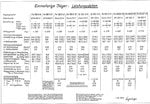Erich
the old Sage
Don the useage of my notes on the MW 50 injection goes way back for years to the 10th staffel of Jg 300 flying Moskito-jagd against the LSNF of the RAF bombing Berlin in the summer-November 1944. The Bf 109G-6/AS had MW 50 as standard and they used the injection system above 30,000 feet. so did the high flying protection staffels in JG 1, 11 and in I./JG 3 as I know ace Horst Petzschler who used it successfully to take on the P-51B's in April and May of 1944 over Normandie.
another note Don the Fw 190D-9 did not have GM-1 only MW 50 from my notes
another note Don the Fw 190D-9 did not have GM-1 only MW 50 from my notes

